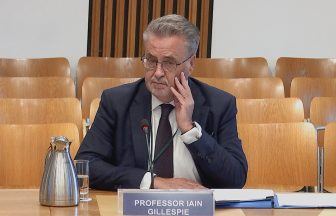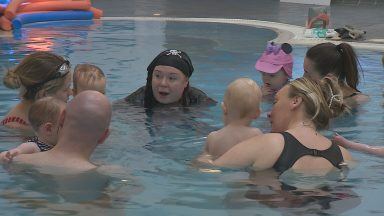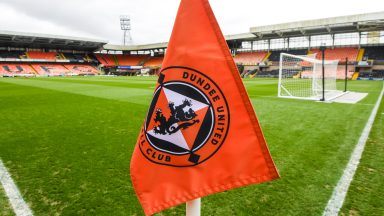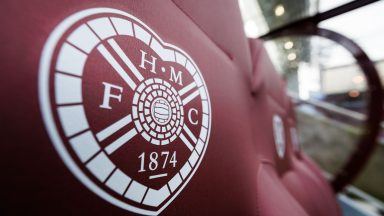Warnings about the cost of coronavirus to Scottish football are nothing new but there was a harder, colder edge to the conversation this week.
Since lockdown, and throughout the summer, fears have been voiced about the prospect of serious financial difficulties if there wasn’t a return to some sort of normality soon.
‘Some sort of normality’ meant at least some fans paying to push through turnstiles and into grounds. ‘Soon’ was more fluid but was generally taken to be no later than October 5, the date the Scottish Government had pencilled in for a phased return of supporters at sporting events.
The rise in coronavirus cases forced Holyrood to announce new measures to deal with the virus this week and that October date was revisited. Nicola Sturgeon said the proposed return was “unlikely”. Anyone with a grasp of reality heard that as “No chance”.
Similar steps that were introduced in England are expected to be in place for around six months and the overall impression is that if you want to watch professional football any time before March, you should test your broadband speed and check your TV schedule.
For the clubs, the announcement didn’t bring widespread panic but the sober realisation that of the budgets drafted and marked as best case to worst case, it would be the gloomier outlook that would prove to be accurate.
The Premiership is already under way of course, with a rigorous testing regime, a plan in place and a TV deal to satisfy and help cover some costs. Below the top flight though, the action has yet to start and there are questions about how it will end.
Clubs in the Championship, League 1 and League 2 don’t start their league campaigns until mid-October and the Betfred Cup before that. The later start dates were put in place primarily because fans were expected to be in attendance by then.
Squads are assembled, contracts are in place. Costs are set in concrete. Now, projected income has vapourised.
The Scottish FA and Scottish Professional Football League haven’t always been renowned for swift action but they did move quickly after this week’s announcement. Talks were held with government and the Scottish minister for sport penned a letter to his Westminster counterpart seeking discussions about a financial recovery package. The message was clear: Send money or many clubs will be financially crippled, if they survive at all.
It’s no exaggeration when 43% of club revenues come from ticket sales.
Will a huge rescue package from London end all fears? It seems reasonable to expect that if there’s a bail-out for English clubs then a proportionate amount would be diverted to help in Scotland as well. But the conversation south of the border seems to be that help would only go so far, with the Premier League riches expected to trickle down and help those in the lower leagues.
That couldn’t happen here. The SFA and SPFL don’t hold huge cash reserves and the former has seen its own income slashed with the latter stages of the Scottish Cup and the upcoming internationals looking like they will be played at an empty Hampden.
Top flight clubs aren’t in much of a position to help either. Belts are being tightened across the board and at the same time as Ross County are talking about helping cup opposition with testing costs, Motherwell manager Stephen Robinson is talking about the strain on his club even after they qualified for Europe and banked money from player sales.
Hamilton boss Brian Rice was blunt in his assessment on Thursday’s STV News at Six: “Bail them out. Give us a hand. The whole country is on its knees. We’re not looking for favouritism, just looking for help like everybody else is.”
Zoom calls between the SFA, SPFL and lower league clubs on Friday were more about assessing the damage than finding a solution.
While there was a confidence about starting the season, and making it through 27 games, the longer stands remain empty the less secure clubs feel. While a hypothetical right now, a testing regime with its associated costs (estimated at between £50,000 and £100,000 a season) would bring all sorts of questions. As you would expect, what’s manageable at Championship level is less viable in League 1 and even more challenging in the bottom tier.
Clubs were also asked to put a figure on the cost of a season without fans. It’s not just taking the temperature, the figures will be used to build a case for government assistance and it could be as stark as counting the clubs who will fail to make it if a bail-out package isn’t delivered.
Beyond the plea for help, there are limited options.
Suspending the season and ‘mothballing’ wouldn’t work for many as player contracts – a major cost – have to be honoured and clauses to cancel would apparently only kick in if all football was suspended by the Scottish FA. Taking a decision now to shorten the season and only play 18 games instead of 27 would be similarly ineffective.
Government money seems the only solution to the crisis and if it doesn’t materialise then cost-cutting, video streaming revenue and other fundraising won’t go far enough to make professional football viable for some.
Instead of excitement building for the start of the new season for those outside the Premiership, it’s being approached with trepidation and uncertainty. Chairmen are less concerned with an eventual finishing position in the league than with being in a position to finish the league season.
Games will be played as reserves dwindle and fears grow. Appeals will be made and doomsday scenarios will be spelled out.
There are no easy decisions for clubs deprived of the income that’s sustained them for decades and for over century in many cases. For many, it’s a waiting game now, hoping an injection of cash arrives before it’s too late. The fate of many may be decided in the halls of government instead of on the pitch.























